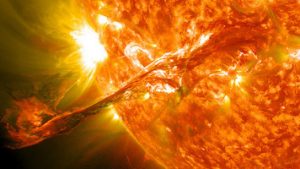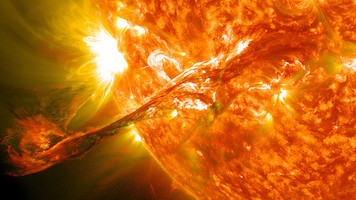
According to a report on WUWT – the best climate site out there in my opinion – a strong solar storm in 1972 caused widespread disturbances to satellites and spacecraft, and may have led to the detonation of mines during the Vietnam War, according to new research showing the event may have been a more devastating solar storm than previously thought.
The study’s authors suggest the solar storm was a Carrington-class storm, meaning it may have been similar to the strongest storm on record, the Carrington Event of 1859. They hope the new findings will motivate further investigation of the storm and help scientists prepare for solar events in the future.
“This is a Carrington-class storm that has gone under the radar,” said Delores Knipp, a research professor at the University of Colorado Boulder and senior research associate at the High Altitude Observatory of the National Center for Atmospheric Research in Boulder, Colorado. “What I am asking scientists to do is go back and reinvestigate with new eyes.”
In a new study in Space Weather, a journal of the American Geophysical Union, researchers pieced together data and historical records related to the solar activity of 1972 to better understand the nature of the solar storm.
According to the Plain Language guide on Space Weather:
The extreme space weather events of early August 1972 had significant impact on the U.S. Navy, which have not been widely reported. These effects, long buried in the Vietnam War archives, add credence to the severity of the storm: a nearly instantaneous, unintended detonation of dozens of sea mines south of Hai Phong, North Vietnam on 4 August 1972. This event occurred near the end of the Vietnam War. The U.S. Navy attributed the dramatic event to magnetic perturbations of solar storms. In researching these events we determined that the widespread electric‐ and communication‐grid disturbances that plagued North America and the disturbances in southeast Asia late on 4 August likely resulted from propagation of major eruptive activity from the Sun to the Earth. The activity fits the description of a Carrington‐class storm minus the low‐latitude aurora reported in 1859. We provide insight into the solar, geophysical, and military circumstances of this extraordinary situation. In our view this storm deserves a scientific revisit as a grand challenge for the space weather community, as it provides space‐age terrestrial observations of what was likely a Carrington‐class storm.

